I have developed a pretty good system for getting my lapstrake rowing canoe to the water. The canoe alone is pretty heavy, close to 80 lbs, and with the sliding seat, outriggers, and oars aboard, it tops 100 lbs, a lot more than I want to lift all at once. I keep the canoe on a shelf built into the garage so it slides straight across to my car’s roof rack and at the launch ramp I drag it off the back of the car, rest the stern on the ground at the water’s edge, and then lift the bow off. A pool noodle is all it takes to roll the canoe down the ramp into the water.
Getting the canoe launched at a beach is more of a challenge. I’ve been using the roller carts that I built for Ben Fuller’s article in our January 2017 issue. One has a wooden roller and the other a plastic pipe. The pipe has a larger diameter, 7”, and I figured it might work on sand. With the cart strapped to the canoe about amidships, the pipe made a lot of noise but worked fine over pavement, a gravel path, and a boardwalk. To my dismay, the pipe couldn’t handle sand. In short order, it bulldozed a pile of sand ahead of it and that was the end of it. To be fair, Ben had noted in his article that these carts are used upside down on soft ground and remain stationary while the boat rides the upturned roller. That does indeed work, but I have a broad beach to get across, and moving the canoe one boat length at a time and shuttling the roller ahead makes progress slow and tedious.
Several years ago, I had toyed with the idea of using an inflatable boat fender as a roller. The type of fender with a hole down the middle makes it possible to skewer one with a steel rod for an axle. The roller cart I made worked, but I didn’t really need it because I could just as easily carry a kayak on my shoulder. If I made a cart for the canoe with a larger fender, I thought I might have an easier time launching my canoe. Fenders are quite expensive, but I’ve had the good fortune to live by a mile-long lake almost completely hemmed in by marinas and there are a lot of runaway fenders. Just this fall I found five tucked under wharves and in the brambles.
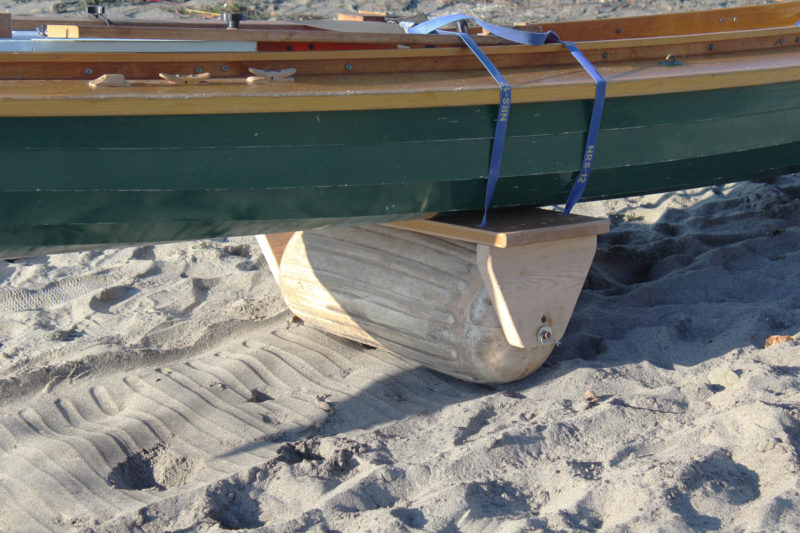
A fender with a hole through the middle looked like a promising solution for managing both hard and soft terrain.
I bought a length of 1/2” steel rod for an axle to fit an old fender 24” long and 10” in diameter. With the kayak roller cart I’d made previously, I had hammered a length of PVC water pipe down the length of the hole in the fender to create a more rigid “bushing” for the axle. I didn’t bother with that for this new cart. The distances I haul the canoe are relatively short, and if I did wear through the hole down the middle of the fender, it had cost me nothing.
The wooden frame was easy to make from a piece of 5/4” Douglas fir that was once a gymnasium bleacher and some ash milled up from a windfall. The fender bowed up in the middle when I put weight on the axle so I pumped some more air in and added extra clearance under the deck of the cart frame.
The fender rolls almost as easily as the solid rollers on my other carts and is a lot quieter—the molded ridges on the fender make a nice soft on rumbling sound on pavement. On grass or cobbles there isn’t perceptible difference in drag and on sand, even soft dry sand, there is surprisingly little extra resistance to rolling. The roller has such a large area of contact that it doesn’t sink or pile sand up ahead of itself. The flattened trail it leaves doesn’t even fill in the deepest footprints in the sand. When the canoe is afloat, I unstrap the cart, slide it to the side and it floats to the surface.
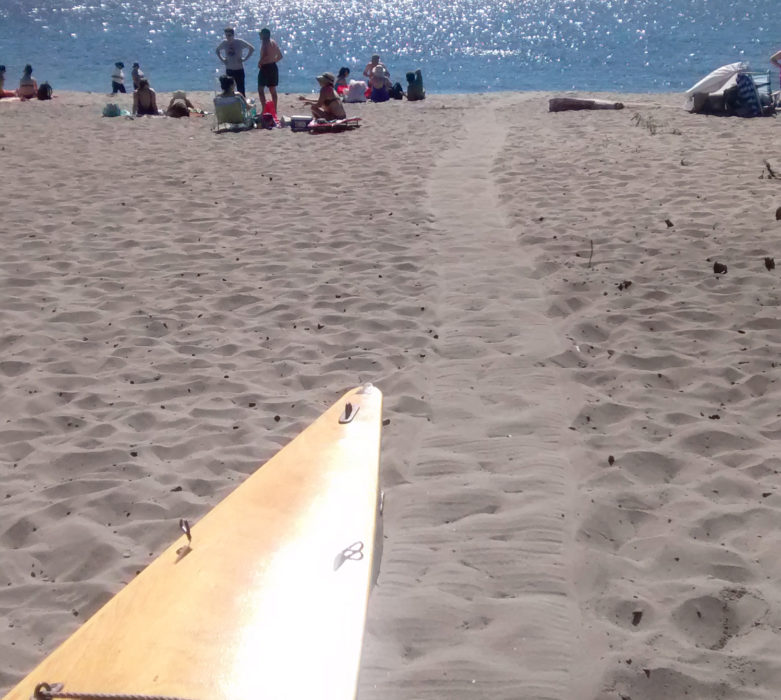
The old fender and I had some good runs before it gave out. A newer fender less prone to cracking may be the solution.
My fender cart worked like a charm, but the old fender eventually gave out. I had noticed a small crack at the edge of the inflation valve, a sign that the aging material was losing its flexibility, so it wasn’t a great surprise to have a leak develop where axle bears on the hole at one end of the fender. I’ll try again with a fender that isn’t quite so old and still has good flexibility. Maybe a pair of smaller fenders. And I may take another shot at bushings, at least short ones in the ends. For now my heavy-duty all-terrain cart, built on the cheap, just needs the right fender to go adrift.![]()

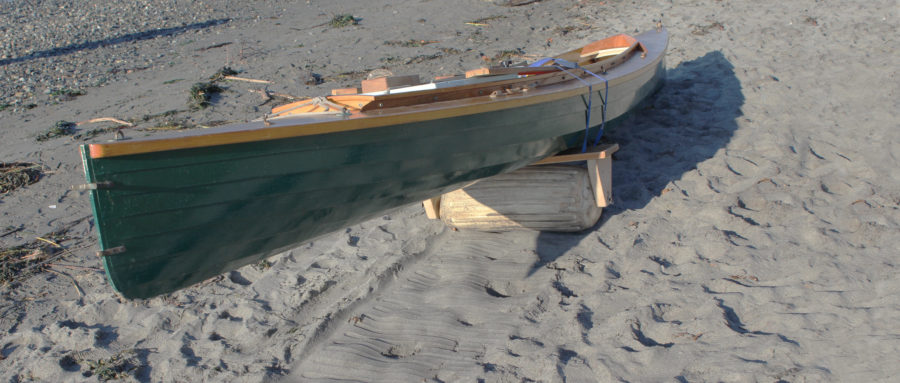
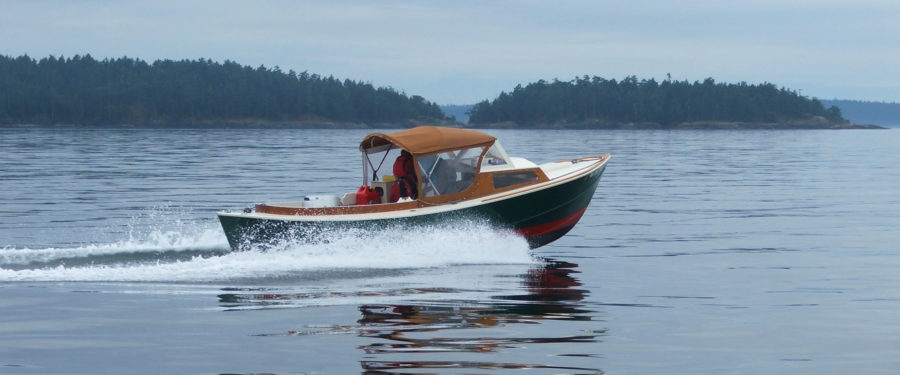

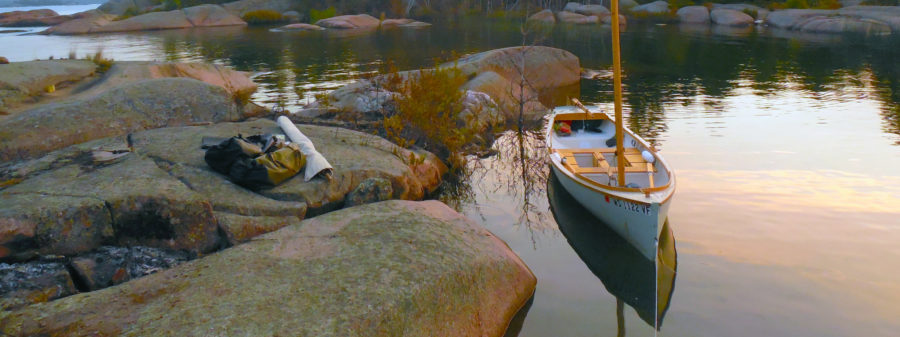
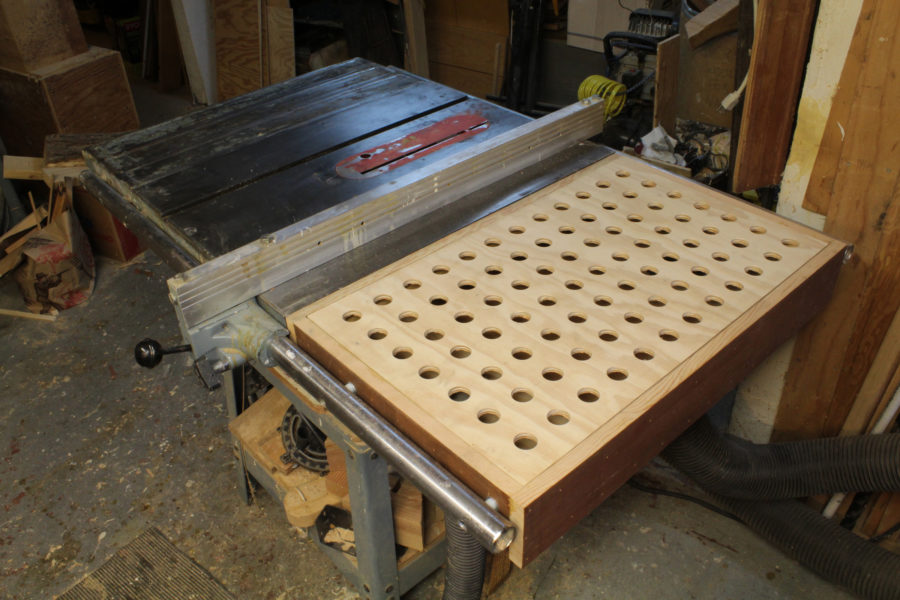
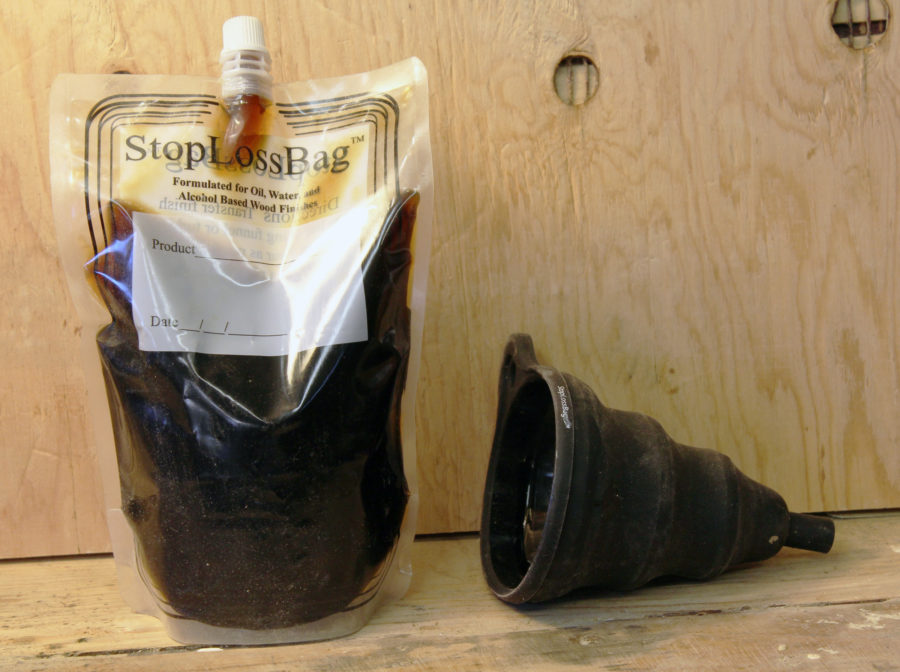
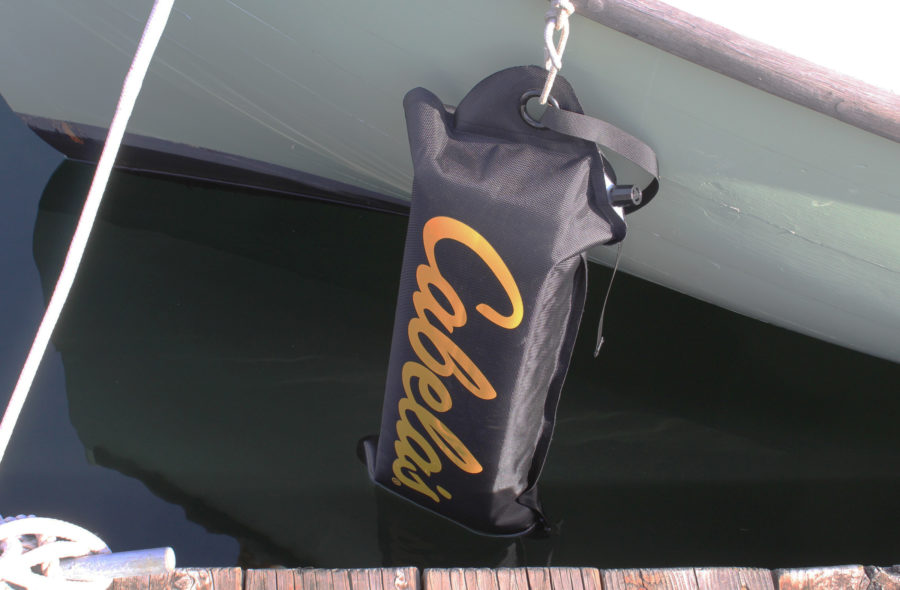
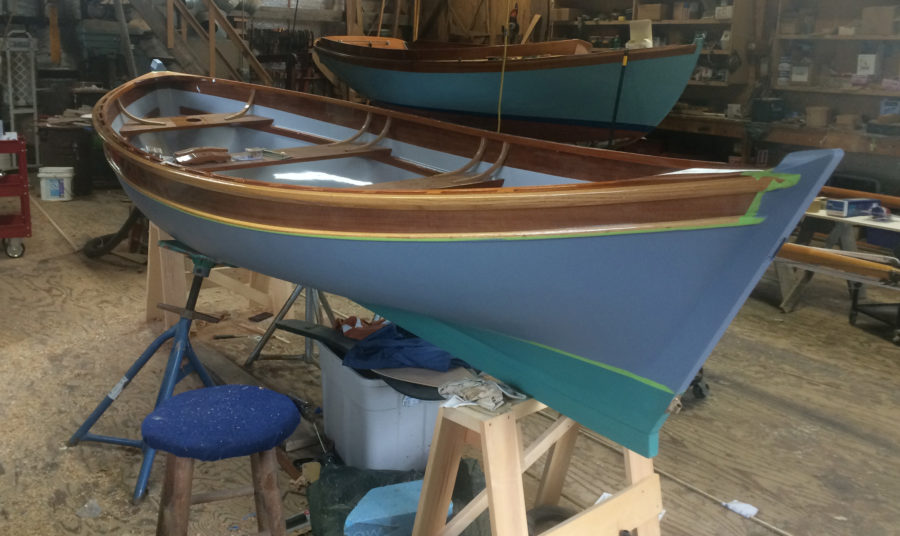
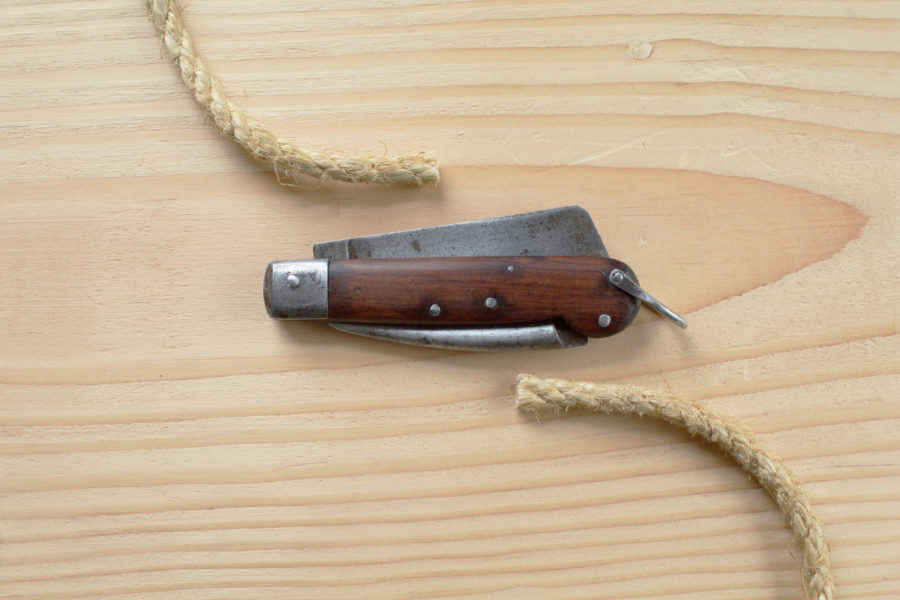
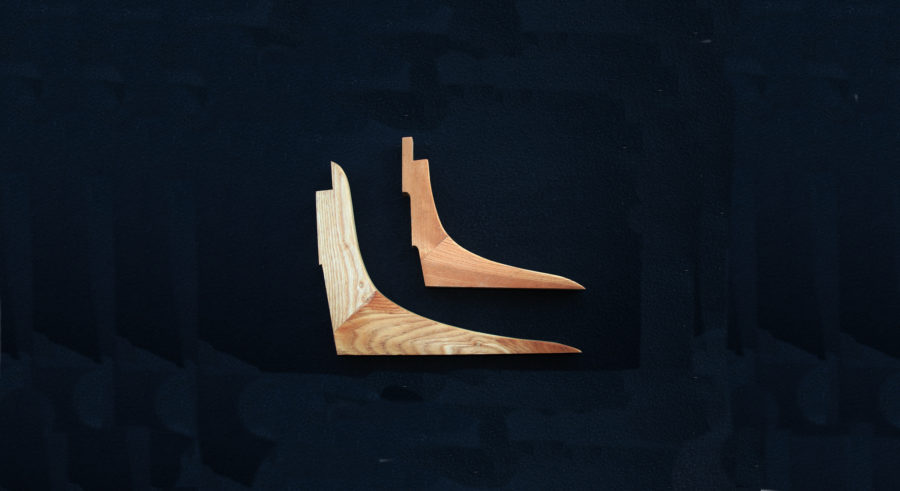
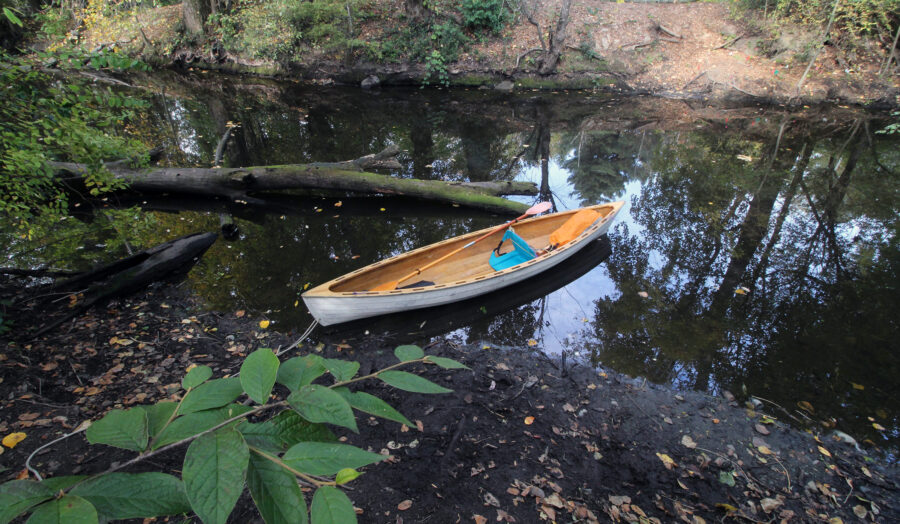
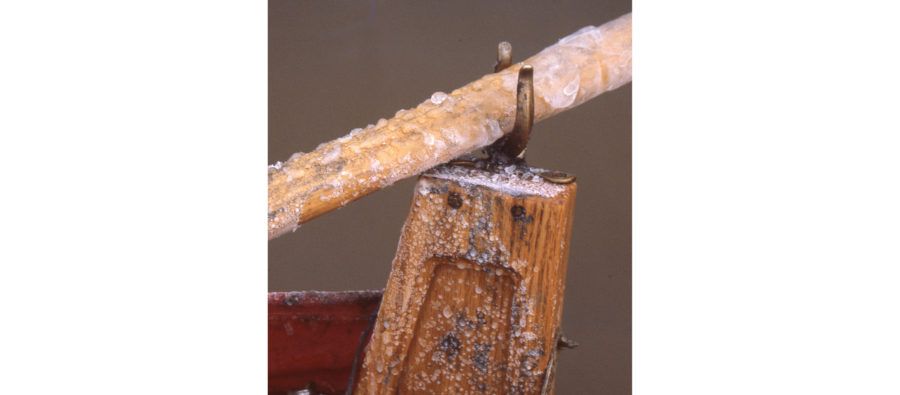
What a great idea! I lived in Northeast Ohio near Lake Erie for several years, and I would take my canoe to the lake occasionally when the waves were small. I was a lot younger then, but it was still a chore for me to lug the canoe from my car to the water. The trek included a bit of paved roadway, some sand and some beach gravel, and it was at least 100 yards from my car to the water. By the time I got the canoe to the water, I was worn out and still had the trip back to my car to look forward to. If I’d had Christopher’s fender wheeled device, getting my canoe from my car to the lake and back would have been a piece of cake.
Nice work, Chris. If the fender develops a leak,would it be practical to shoot it full of some expanding foam to extend the life of the roller?
If there were an expanding foam that offered the same kind of cushioning as air, that would be a good solution. I see some pourable seat-cushion foams on the web that might work. It might take some experimenting to find the right density to create a wide footprint.
Before I knew there were yellow inflatable beach rollers to be had, I was making my own using two 5-inch in diameter fenders tied together and with a short piece of PVC pipe over the connection to keep them rolling straight. I had two of these to roll my sailing canoe fully loaded for a trip up and down the beaches of Puget Sound. On my last trip, my grandson accompanied me, so I made a third one and kept him busy moving one forward while the canoe rolled along on the other two. Sometimes over 200′. It made for light work, especially when compared to unloading and loading and making half-a-dozen trips back and forth up and down the beaches; and I was getting older.
I have a set of 12-inch wheels that attach to brackets on the canoe for moving an empty canoe to the beach, and a small folding handtruck to carry the two plastic boxes that I haul most of my gear in on my trips labeled “Kitchen” and “Bedroom”. I am a BIG believer in wheels to make everything easier, both at work and at play.
Where can you get yellow inflatable beach rollers? My boat is 650-700 lbs. What do you think I need?
Thanks
For more information on the beach rollers, including links to sources, see our review of the Aeré beach rollers.
Chris,this looks good. Thanks for posting. How heavy a boat do you think could be handled on land with a set-up like this?
With a new fender, one that hasn’t stiffened with age, the 100-pound load of my canoe with rowing rig seems like a safe maximum. When the old fender I was using developed a leak, I took it apart and was able to see how it was built. There is a plastic pipe in the middle the fender—that’s what creates the hole for the rope—and the rubbery material the fender is made of is molded around the pipe. The steel axle bears on the pipe, and the ends of the pipe pull on the sidewalls of the fender. The fender is designed for compression on its sides, not tension on its ends, and the ends of the plastic pipe is where there is the most strain and where failure is to be expected. A newer fender that hasn’t been degraded by sun and age might hold up for a good amount of time, but I have yet to test that.
The fender I was using has markings that indicate it was made by Preston Manufacturing, LTD. in Cambridge, Ontario, Canada. The only hit I got on a web search for Preston provides a listing for the business and indicates it manufactures toys and children’s vehicles. The company may be long gone and the fender very old and perhaps not of the best quality when it was new. A new 24″ x 10″ fender of the same type made by Taylor Made costs $100 at West Marine. I found a 13″ x 34″ fender made by Polyform. Selling new for $145, it’s the best find I’ve made on the lake. It’s bigger than what I need for the canoe and I’d have to make a new cart to fit it.
I’ve a few fenders around here and will give it a try. The solid roller rig will take almost any weight; we broke one getting a small sandbagger out of a marsh; it was the cheeks that failed. One of the nice things about this rig is that it could be made so that it could be taken apart and travel with you.